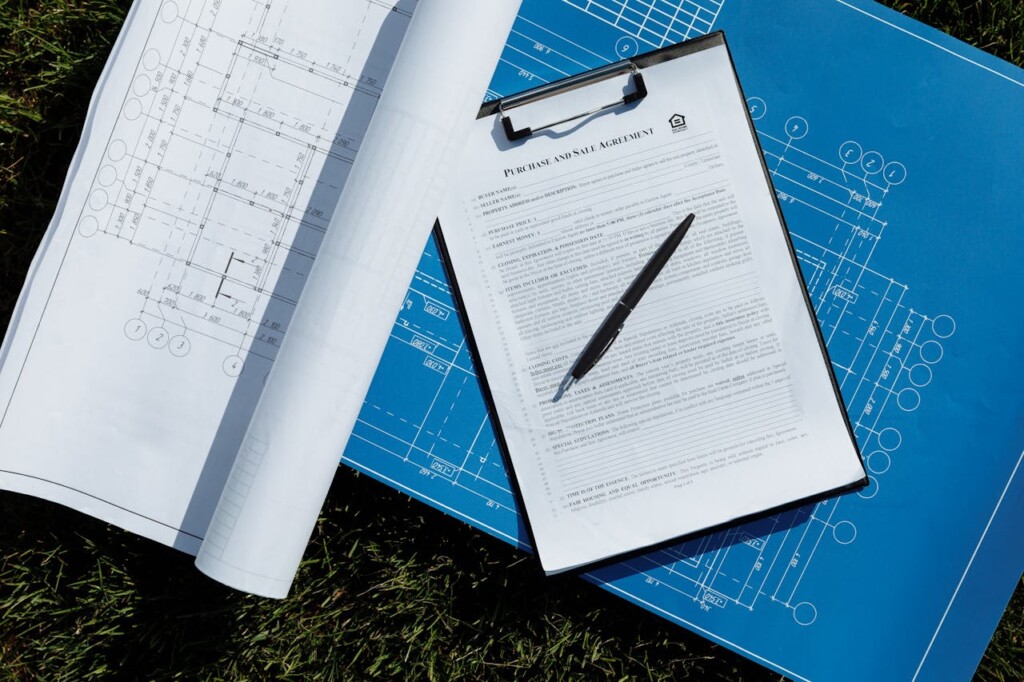Construction failures in Fort Worth carry significant financial consequences. With 75% of projects exceeding their original budgets and only 2.5% of construction companies completing projects successfully, effective risk planning has become essential rather than optional.
We build construction risk management plans because Fort Worth projects face unique challenges that demand systematic preparation. The City of Fort Worth risk management division emphasizes loss prevention, insurance programs, and claims coordination for public projects, setting the standard for comprehensive risk exposure assessments. This article covers the core components, identification methods, mitigation strategies, documentation requirements, and practical implementation steps for Fort Worth construction teams.
What Core Components Should Your Plan Include?

A comprehensive risk management plan establishes the framework we use to identify, assess, and respond to uncertainties throughout the project lifecycle. Each component serves a specific function in protecting project outcomes while maintaining clear accountability across all team members.
Risk Management Methodology
The methodology defines our systematic approach to handling risks from project start to completion. We establish clear procedures for identifying potential threats, analyzing their impact, and developing appropriate responses. This framework ensures consistent risk evaluation across all projects and provides a foundation for training new team members on established protocols.
Our methodology includes decision-making criteria that help determine when risks require escalation and which response strategies align with project objectives. We document these processes to maintain consistency and support knowledge transfer between projects.
Risk Identification Process
We use structured workshops and root-cause analysis to uncover risks that might otherwise remain hidden until they impact the project. These sessions bring together field supervisors, project managers, and key subcontractors to identify both obvious and subtle threats to project success.
The identification process captures risks across all project phases, from preconstruction through closeout. We maintain detailed records of how risks were discovered and categorized, creating a knowledge base that improves identification on future projects.
Risk Assessment Framework
Assessment involves both qualitative rankings and quantitative analysis to prioritize risks effectively. We evaluate each risk’s likelihood of occurrence and potential impact on schedule, budget, safety, and quality objectives. This dual approach allows us to address urgent threats while maintaining perspective on long-term project health.
Quantitative analysis includes modeling potential cost and schedule impacts where sufficient data exists. We use this information to size contingencies appropriately and allocate resources to the most critical risk areas.
Risk Response Planning
Response strategies fall into four categories: avoidance, transfer, mitigation, and acceptance. We document specific actions for each risk, including contractual risk transfer through insurance and bonding, mitigation measures like enhanced quality control, and acceptance strategies with contingency plans for lower-priority items.
Each response includes resource requirements, implementation timelines, and success criteria. We prepare these plans before risks materialize, enabling rapid response when conditions change.
Roles and Responsibilities
We assign a specific risk owner for each identified item, creating clear accountability for monitoring and response execution. Risk owners track their assigned risks throughout the project, coordinate with other team members as needed, and escalate issues when predetermined thresholds are reached.
The assignment process considers each team member’s expertise and project role, ensuring risk owners have the knowledge and authority needed to manage their assigned items effectively.
Risk Monitoring and Control
Monitoring involves regular reassessment, trend analysis, and reserve tracking to ensure risks remain properly managed. We conduct periodic audits of risk status, update probability and impact assessments based on changing project conditions, and adjust response strategies as needed.
Control measures include establishing trigger points that prompt specific actions and maintaining reserves sized to address identified risks. We track both individual risk status and overall project risk exposure to support informed decision-making.
Budget and Contingency Planning
We establish cost and schedule buffers aligned with assessed risk exposure, ensuring adequate resources are available to address issues as they arise. Contingency sizing considers both the probability of risk occurrence and the potential magnitude of impact.
The budget includes funds for risk identification activities, response implementation, and ongoing monitoring efforts. We track contingency usage throughout the project to maintain visibility into remaining reserves and overall risk exposure.
Communication and Reporting
Centralized communication keeps all stakeholders informed of risk status and response activities. We maintain comprehensive records in a risk register that serves as the single source of truth for all risk-related information.
Regular reporting includes risk status updates, trend analysis, and recommendations for stakeholder consideration. We align reporting schedules with project milestones and decision points to ensure timely information availability when needed most.
Which Mitigation, Transfer, And Monitoring Strategies Work Best?
Once risks are identified and prioritized, we focus on implementing effective responses. Risk management strategies in construction follow four proven approaches: avoidance, transfer, mitigation, and acceptance. Each method requires specific execution to protect project objectives while maintaining operational control.
Risk Response Strategies
We select response strategies based on risk probability and potential impact. Risk avoidance eliminates high-exposure activities through design changes or alternative construction methods. When risks cannot be avoided, contractual risk transfer shifts responsibility to parties better positioned to manage specific exposures.
Insurance and bonding provide financial protection against unforeseen losses. Payment and performance bonds guarantee project completion and subcontractor payments, while builder’s risk insurance covers property damage during construction. Professional liability policies protect against design errors and consulting mistakes.
Risk mitigation reduces probability or impact through practical measures. We specify reliable suppliers with proven track records, implement additional testing protocols for critical materials, and use simplified construction methods where feasible. Low-priority risks often warrant acceptance with contingency plans rather than expensive prevention measures.
Safety And Compliance Programs
OSHA compliance forms the foundation of construction safety programs. We enforce personal protective equipment requirements consistently across all trades and maintain comprehensive safety training for workers. Site-wide safety culture develops through regular toolbox talks, hazard recognition training, and incident reporting systems.
Compliance programs extend beyond safety to include building codes, environmental regulations, and permit requirements. We track regulatory changes that could affect project execution and maintain current documentation for inspections. Safety and compliance checkpoints align with construction milestones to catch violations before they escalate.
Robust Planning And Quality Control
Risk integration occurs during project planning phases. We build risk considerations into construction schedules, resource allocation, and procurement strategies. Quality control measures include specification adherence, material testing protocols, and regular inspections with documented results.
Inspection logs capture quality issues as they emerge, allowing immediate corrective action. We use standardized checklists for different construction phases and maintain photographic records of completed work. These documentation practices provide evidence for change orders and protect against disputes over work quality.
Technology Applications
Building Information Modeling enhances risk visualization and coordination between trades. BIM clash detection identifies conflicts before field installation, reducing rework and delays. We use analytics platforms to track performance metrics and identify trends that signal emerging risks.
Cloud-based project management platforms centralize risk information and enable real-time updates from field personnel. Mobile applications allow immediate reporting of safety incidents, quality issues, and schedule impacts. Site monitoring systems provide continuous surveillance of critical areas and high-value equipment.
Monitoring And Control Practices
Risk audits assess the effectiveness of mitigation strategies and identify new exposures as projects progress. We analyze cost, schedule, and scope trends to detect patterns that indicate developing problems. Reserve management ensures adequate contingencies remain available for unexpected issues while avoiding excessive project costs.
Stakeholder updates flow through centralized communication channels to maintain consistency and avoid conflicting information. We conduct formal risk reviews at major project milestones and adjust strategies based on changing conditions. Schedule risk analysis using Monte Carlo simulations helps quantify potential delays and supports contingency planning decisions.
How Should You Document And Report Risks For Fort Worth Projects?

We structure our risk documentation around a living register that captures every detail necessary for effective decision-making. The register serves as the single source of truth for all project risks, integrating seamlessly with our construction schedule and budget tracking systems.
Essential Risk Register Fields
Each risk entry in our register includes a concise risk item description and summary that clearly states the threat or opportunity. We avoid vague terminology like “schedule delays” and instead document specific risks such as “concrete supplier delivery delays during peak construction season may push foundation completion beyond October 15th milestone.”
The proposed actions section outlines both preventive measures and contingency steps. For the concrete delivery risk, preventive actions might include securing backup suppliers and establishing delivery priority agreements. Contingency steps detail alternate concrete sources and expedited placement procedures if delays occur.
Resource requirements capture the budget and time impacts of both risk responses and potential risk events. We quantify these impacts wherever possible, noting that backup supplier agreements may add 3% to material costs while potential delays could extend the schedule by two weeks. This financial clarity helps stakeholders understand the true cost of risk management versus risk acceptance.
Ownership And Accountability Structure
Risk ownership assignments specify both the primary risk owner and involved parties. The primary owner monitors the risk and executes response plans, while involved parties provide subject matter expertise or resources. For site safety risks, we typically assign ownership to the safety manager while involving superintendents, subcontractor leads, and OSHA compliance specialists.
Timing and trigger points tie directly to our construction schedule milestones. We establish clear indicators that signal when risks are escalating or when response plans should activate. Weather-related risks might trigger at specific forecast thresholds, while budget risks activate when cost projections exceed predetermined variance levels.
| Risk Category | Risk Name | Impact Description | Impact Rating/Score | Treatment Plan & Status | Residual Risk & Target Rating |
| Operational | Risk ID | A unique identifier for each risk. | 1-5 scale of likelihood and impact. | Planned actions to handle the risk, current status. | The current level of risk after treatment, target score when resolved. |
| Risk Description | A brief explanation of the risk, stating the potential problem. | Summary of mitigation actions taken and any progress updates. | |||
| Risk Owner | Person responsible for managing the risk. | Status of implementation of actions. | |||
| Source | The origin or cause of the risk. | Status of remaining risk after actions applied. | |||
| Mitigation Strategy | Actions planned to reduce risk likelihood or impact. | Anticipated risk level after complete implementation of actions. | |||
| Threat | What could go wrong if the risk materializes. | Overall treatment status and progress details. | |||
| Impacted Systems | Systems that could be affected by the risk. | Ongoing assessment and alignment with treatment goals. | |||
| Likelihood & Impact | Estimated chances of occurrence and potential effects. | Status and timeline for reaching target ratings. |
Monitoring And Status Tracking
The reporting and monitoring method field defines how we track each risk throughout the project lifecycle. Some risks require daily monitoring during critical phases, while others need weekly assessment during routine construction periods. We document the specific metrics, reports, or observations used to gauge risk status.
Status tracking employs a standard classification system that immediately communicates risk condition to stakeholders. We use categories such as “Active-Monitor,” “Active-Response,” “Escalated,” and “Closed” to provide clear status visibility. Each status change triggers predetermined communication protocols.
Communication And Phase Gate Integration
Our communication plan establishes regular, concise stakeholder updates that align with project reporting cycles. We provide brief risk summaries in weekly progress reports and detailed risk analysis during monthly project reviews. Executive briefings focus on high-priority risks and their potential impact on project objectives.
We track certificates of insurance, bonding documentation, and other risk-related paperwork within the same system. This centralized approach ensures that contractual risk transfer mechanisms remain current and enforceable throughout the construction process. Insurance certificate renewals tie to calendar reminders and contractor compliance tracking.
Phase gate reviews represent critical decision points where we reassess the entire risk landscape before proceeding to the next construction phase. These reviews examine whether new risks have emerged, existing risks have changed in severity, and response plans remain appropriate for upcoming work activities. This alignment prevents risks from escalating during phase transitions when project focus typically shifts to new work areas.
Conclusion and Practical Next Steps

A structured risk management plan provides Fort Worth construction teams with critical controls over cost and schedule while driving improvements in safety and quality outcomes. Teams that implement comprehensive risk planning experience fewer disputes, better stakeholder relationships, and more predictable project delivery. The investment in upfront risk planning pays dividends throughout the construction lifecycle.
To implement effective risk management on your Fort Worth projects, start with these actionable steps. Hold a kickoff risk workshop with all key stakeholders to build your initial risk register and establish shared understanding of potential threats. Set up a simple 1-5 matrix for impact and likelihood assessment that your team can consistently apply. Assign clear risk owners for your top-priority risks and define specific response strategies for each identified threat.
Establish safety, quality control, and compliance checkpoints that align with your project milestones and regulatory requirements. Size your cost and schedule contingencies based on quantified risk exposure, then track reserve usage throughout the project. Schedule regular risk reviews at each major milestone and maintain transparent communication with stakeholders through centralized reporting channels. Keep your insurance and bonding documentation current, including certificates and coverage verification.
Make your risk management plan a living document that evolves with changing site conditions and project objectives. Regular updates ensure your risk responses remain relevant and effective as conditions shift. This ongoing attention to risk management transforms potential problems into manageable challenges, supporting successful project outcomes across Fort Worth’s dynamic construction environment.
Ready to implement comprehensive risk management for your Fort Worth construction project? Contact EB3 Construction to discuss how we approach risk planning and mitigation strategies.




